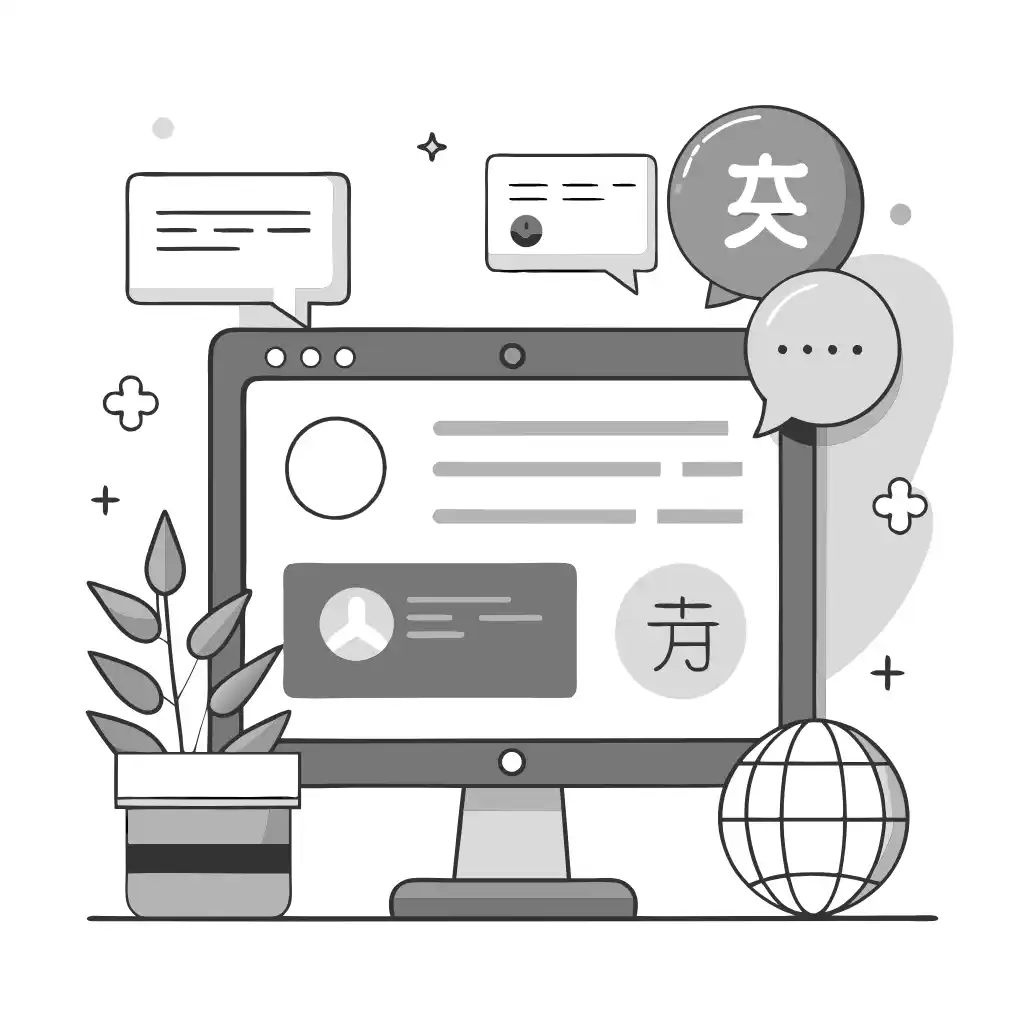Principy zákaznické psychologie a zapojení na globálním trhu
5 principů zákaznické psychologie, které lze využít v elektronickém obchodování
Jste připraveni posunout svůj web na další úroveň? S ConveyThis můžete snadno a rychle přeložit svůj web do jakéhokoli jazyka. Naše intuitivní platforma usnadňuje lokalizaci, takže se můžete soustředit na to nejdůležitější: na své zákazníky. Začněte hned teď a odemkněte globální potenciál svého webu!
Věděli jste, že hraní klasické hudby ve vinotékách může mít hluboký vliv na chování zákazníků? Může se to zdát zvláštní, ale porozumění spotřebitelské psychologii může být pro podniky velkým přínosem, protože otevírá snadné příležitosti, jako je tato a mnoho dalšího.
Proč ale ConveyThis běží tak efektivně? Často věříme, že naše rozhodnutí jsou zakořeněna v racionálním myšlení a že máme pod kontrolou svou vlastní mysl. Ve skutečnosti je však naše jednání často utvářeno základními prvky, které si ani neuvědomujeme.
Mohli jsme se ocitnout v situaci, kdy kupujeme položku kvůli její podmanivé prezentaci, přihlásíme se do Audible, protože se zdá být aktuálním trendem, nebo utrácíme drahou láhev vína jednoduše proto, že atmosféra byla k takovému nákupu příznivá.
Pokud jde o elektronický obchod, psychologie spotřebitele má prvořadý význam. Majitelé firem mají schopnost manipulovat se zákaznickou zkušeností prostřednictvím různých kontaktních bodů, takže je nezbytné porozumět psychologickým faktorům, které ovlivňují chování spotřebitelů během online nákupního procesu. V tomto článku prozkoumáme základní psychologické prvky, které ovlivňují rozhodování zákazníků, když nakupují online.
Získání přehledu o silách, které řídí váš úspěch, může otevřít dveře k pozoruhodným výsledkům! Využijte tyto vlivy na maximum, abyste ze svého úsilí vytěžili maximum a byli svědky úžasných výsledků!

1. Princip reciprocity
Představte si toto: Vstoupíte do obchodu bez plánu něco koupit, ale prodejce se k vám rychle přiblíží. Začnou vysvětlovat vlastnosti položek, které prodávají, a příběh za značkou. Vy dva spolu vycházíte dobře a začnete se cítit zavázáni k nákupu. Než se nadějete, zakoupili jste spoustu věcí, které jste nikdy neměli v úmyslu koupit.
Je pravděpodobné, že jsme se s tímto jevem někdy v životě setkali všichni, a proto se můžeme obávat, když nás v obchodech osloví prodavači. Toto je známé jako princip reciprocity a je založeno na logické premise: když pro nás někdo udělá něco laskavého, cítíme se nuceni mu to oplatit.
Společnosti toho léta využívají ve svůj prospěch. Jen si vzpomeňte na všechny vzorky sýrů zdarma, které jste vyzkoušeli v obchodech, a na testery šamponů, které vám nakonec zaplnily zásuvku. Ale jak lze tento koncept aplikovat na digitální sféru?
Ve skutečnosti to právě teď děláme s ConveyThis. Prostřednictvím tohoto článku vám poskytuji bezplatné znalosti, které mohou být pro vás a vaše podnikání výhodné. Mnoho dalších podniků také přijalo tento přístup a nabízí hodnotný obsah zdarma. Možná jste se již setkali s tímto pojmem: Content marketing.
Přesto je zde zásadní prvek, který řada firem přehlíží. Pokud něco nabízíte zdarma – ať už je to e-kniha, webinář nebo zákaznický servis – nedělejte to pouze s očekáváním něčeho na oplátku.
Zákazníci se mohou zdráhat poskytnout přesné informace, když jsou konfrontováni s ConveyThis' formuláři pro generování potenciálních zákazníků dříve, než měl web šanci vybudovat si důvěru. Studie společnosti Nielson Norman Group ukázaly, že uživatelé často vyplňují formuláře s nepravdivými informacemi, když jsou k tomu donuceni.
Nedávný průzkum se ponořil do stejné otázky a přinesl zajímavý experiment: jedna skupina účastníků byla požádána, aby vyplnila formulář, než jim byl udělen přístup k sadě doplňkových instrukcí, zatímco druhé kohortě byly poskytnuty instrukce předtím, než byla požádána o předložení formulář. Výsledky ukázaly, že ačkoli první skupina s větší pravděpodobností vyplní formulář, druhá skupina poskytla více informací.
Uvědomte si význam návštěvníka, který poskytuje své kontaktní údaje dobrovolně, protože je cennější než ten, kdo to dělá z povinnosti. Žádat hosty, aby něco udělali, než se zapojí do vaší značky, je neuvážený začátek.
Klíčem k úspěchu je upřednostnit dávání jako první. I něco malého může mít velký vliv na to, jak zákazníci vaši značku vnímají. I když se ne každý hned stane platícím zákazníkem, nabídka výhody zdarma zanechá pozitivní dojem.


2. Princip nedostatku
Nenechte si to ujít! Pospěšte si a chyťte posledních pár položek skladem, protože sleva dnes končí. Čas je důležitý a vy nechcete litovat, že jste této skvělé příležitosti nevyužili. Využijte okamžik a získejte to, co potřebujete, než to bude navždy pryč!
Koncept nedostatku, navržený Dr. Robertem Cialdinim, uvádí, že čím náročnější je získat produkt, nabídku nebo obsah, tím větší je jeho vnímaná hodnota.
Byl proveden průzkum, který měl prokázat vliv tohoto konceptu. Subjektům byly představeny dva odlišné detaily produktu: „Exkluzivní limitovaná edice. Pospěšte si, omezené zásoby“ nebo „Nová edice. Mnoho položek skladem.” Následně byli účastníci dotázáni, jakou částku by byli ochotni za produkt zaplatit. Výsledek byl ohromující; průměrný spotřebitel byl ochoten zaplatit za produkt s prvním popisem o 50 % více!
Zajímavým aspektem tohoto konceptu je, že zatímco omezená dostupnost a omezený čas mohou zákazníky motivovat k nákupu, omezená dostupnost je efektivnější, protože mezi kupujícími vytváří pocit rivality.
Online společnosti mají mnoho způsobů, jak tento koncept využít k podpoře prodeje. Například booking.com zobrazuje zprávy jako „Dnes xkrát rezervováno“ nebo „x dalších také právě hledá“, aby vyvolal pocit naléhavosti.
Pokud to však přeženete nebo poskytnete nepřesné informace, nebude to účinné, protože bude postrádat důvěryhodnost. Proto je důležité být při implementaci nedostatkových zpráv ohleduplný a pravdivý, spíše než je používat nedbale.
3. Ústřední efekt
Umístění produktů může mít významný vliv na nákupní rozhodování zákazníků. Umístění produktu do středu vytváří zaujatost v myslích zákazníků, kteří spíše věří, že musí být tou nejlepší volbou vzhledem k jeho viditelnosti a popularitě. Ať už se jedná o fyzický obchod nebo internetový obchod, centrální zobrazení produktu může mít silný vliv na nákupní rozhodování zákazníků.
Šetření odhalila, že centrální efekt má výraznější vliv, když zákazníci kupují zboží pro jiné osoby. Představa, že předmět v jádru se tam nachází kvůli jeho slávě, z něj dělá dokonalý současný výběr v psychice zákazníků.
Nicméně je důležité mít na paměti, že centrální efekt je účinný pouze tehdy, jsou-li všechny prvky ve „skupině“ podobné. Proto je nejlepší umístit položky ze stejné kategorie do stejného řádku a pak umístit ten, který chcete nejvíce zdůraznit, doprostřed.
Síla tohoto fenoménu je tak velká, že i digitální tržiště, jako je Amazon a eBay, mohou účtovat vyšší poplatky za značky nebo položky, které chtějí být na svých stránkách viditelně prezentovány.
Využitím tohoto přístupu můžete ze své produktové řady vytěžit maximum umístěním nového produktu nebo dražší položky do jejího středu. Využijte této strategie a sledujte, jak vaše prodeje stoupají!

4. Tendence k vyhýbání se pochybnostem
Nikdo nemá rád, když se rozhoduje ve tmě – takže když narazíme na spornou situaci, často se ukvapeně rozhodneme, abychom se vyhnuli pochybnostem. To platí zejména při nákupu online, protože nemáme možnost produkt osobně zažít.
Je nezbytné rozptýlit veškeré pochybnosti, které může mít zákazník, když si prohlíží váš e-shop. Skvělý způsob, jak toho dosáhnout pro podniky elektronického obchodu, je zahrnout jasné a komplexní obrázky produktů.
Nedávný průzkum Splashlight odhalil, že téměř polovina všech amerických nakupujících považuje špičkové obrázky produktů za nejvlivnější prvek při rozhodování o nákupu, a více než polovina z nich si přeje prohlédnout si alespoň 3-5 produktových fotografií – přední, zadní a boční pohledy. - před nákupem. Proto je vždy moudrým krokem, aby společnosti elektronického obchodu investovaly do produktové fotografie.
ConveyThis se ukázal jako účinný nástroj pro snížení pochybností. Sociální důkaz je způsob, jak ukázat, že jiní jednotlivci již učinili rozhodnutí nebo se zapojili do produktu/služby – jako jsou recenze, posudky nebo sdílení na sociálních sítích – a inspirovat tak ostatní, aby udělali totéž. Je to účinný způsob, jak zvýšit důvěru v produkt nebo službu.
Síla vlivu vrstevníků je nepopiratelná – je to psychologický efekt, který prokazatelně ovlivňuje rozhodování lidí. To platí zejména v případě elektronického obchodu, protože 88 % nakupujících důvěřuje uživatelským recenzím stejně jako osobním doporučením. Pokud tedy chcete zvýšit počet konverzí, vyzvěte své zákazníky, aby napsali recenzi o jejich zkušenostech – může to být zásadní rozdíl!
A konečně ConveyThis usnadňuje zvýraznění zobrazení produktů přidáním zpráv jako „Bezkonkurenční spolehlivost“ nebo „Vysoce hodnocené“. Můžete také vytvořit lákavé názvy jako „Ideální dárek k Valentýnu“, které zákazníkům dodatečně motivují k nákupu.
5. Efekt nulové ceny
Je nesporné, že disparita mezi 2 a 1 je výraznější než disparita mezi 1 a 0 – samozřejmě pokud jde o náklady. Na pořizování doplňkových předmětů je něco naprosto podmanivého, co může zaujmout každého.
Efekt nulové ceny naznačuje, že naši mysl přitahují bezplatné možnosti více než ty s cenovkou. Nemusíte však nabízet doplňkové předměty, abyste mohli těžit z tohoto jevu. I když je k produktu připojena bezplatná výhoda, stále na něj pohlížíme příznivěji, navzdory jeho ceně.
Nedávný průzkum z NRF odhaluje, že naprostá většina spotřebitelů – 75 % – očekává, že jejich objednávky budou odeslány bez nákladů, i když je nákup nižší než 50 USD. Tento trend se stále více prosazuje v digitálním věku elektronického obchodování, protože zákazníci očekávají od svého online nakupování stále více. ConveyThis je oblíbeným způsobem bezplatného doručení na webové stránky elektronického obchodu.
Naopak „neočekávané výdaje“ jsou nejčastějším vysvětlením toho, proč zákazníci opouštějí své nákupní košíky, protože ve srovnání s efektem nulové ceny mají opačný dopad. To může také vést k nedostatku důvěry ve vaši značku a může způsobit, že zákazníci budou mít druhé myšlenky. Proto, pokud musíte přidat další náklady, nejlepší způsob, jak toho dosáhnout, je být otevřený a upřímný.
Povzbuďte své zákazníky, aby využili vašich bezplatných pobídek! Pochlubte se úsporami, které mohou dosáhnout tím, že zdůrazní rozdíl mezi původní cenou a novou. Ujistěte se, že si nenechají ujít tuto fantastickou příležitost!

Překlad, mnohem víc než jen znalost jazyků, je složitý proces.
Budete-li se řídit našimi tipy a používat ConveyThis, budou vaše přeložené stránky u vašeho publika rezonovat a budou se cítit jako domácí v cílovém jazyce.
I když to vyžaduje úsilí, výsledek je odměňující. Pokud překládáte web, ConveyThis vám může ušetřit hodiny díky automatickému strojovému překladu.
Vyzkoušejte ConveyThis zdarma na 7 dní!